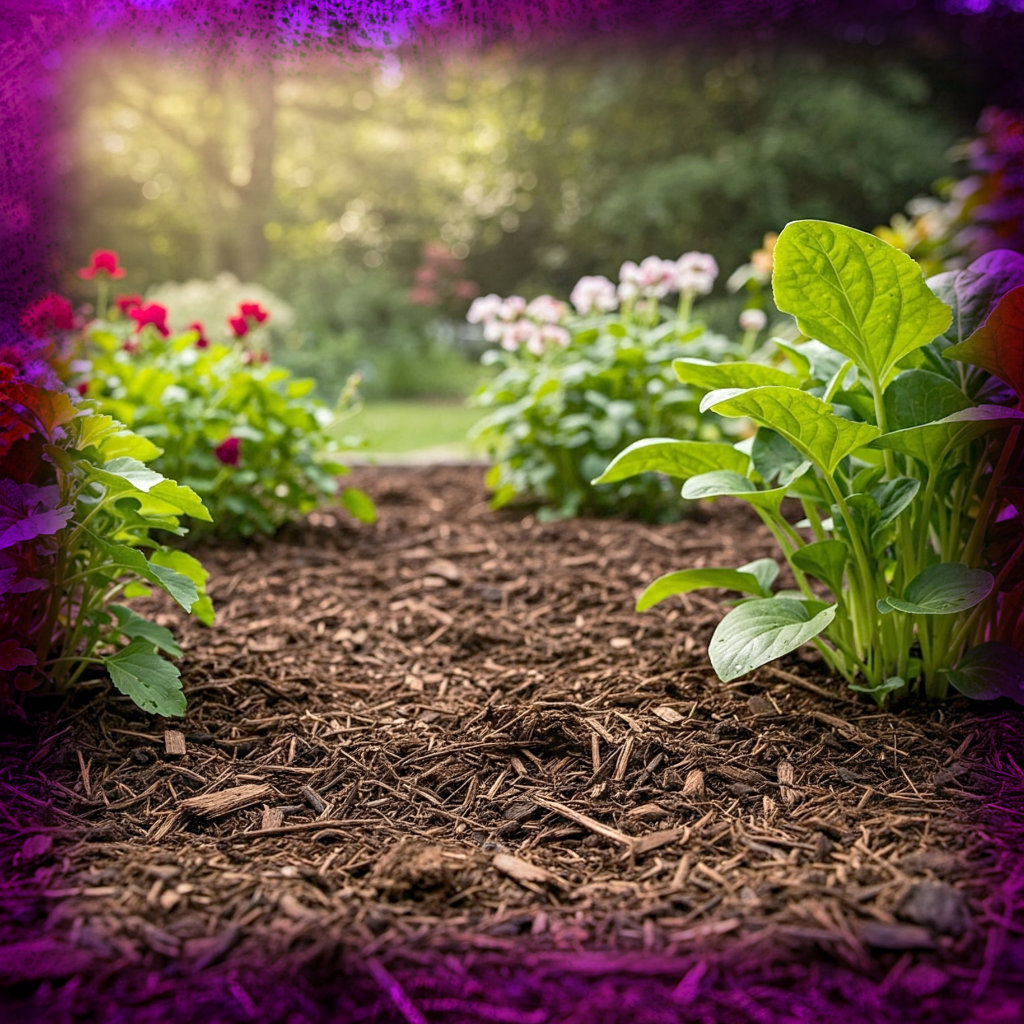Introduction: Why Mulch Matters More Than You Think
In an era of increasing water scarcity and unpredictable weather patterns, gardeners and farmers alike face the pressing challenge of maintaining healthy soil moisture levels. While irrigation systems and drought-resistant plants help, one of the most effective—yet often overlooked—solutions is mulch.
Mulch does far more than just make garden beds look tidy. It acts as a protective blanket for soil, locking in moisture, regulating temperature, and suppressing weeds. Whether you’re growing vegetables, maintaining a lush lawn, or nurturing young trees, proper mulching can mean the difference between thriving plants and a parched, struggling garden.
This comprehensive guide explores the science of mulch, the best types for moisture retention, and advanced techniques to maximize water conservation. By the end, you’ll understand how to use mulch strategically to reduce watering needs, improve soil health, and create a more sustainable landscape.
The Science Behind Mulch and Moisture Retention
How Mulch Prevents Water Loss
Bare soil is vulnerable to rapid evaporation, especially in hot, dry, or windy conditions. When sunlight hits uncovered earth, moisture rises and escapes into the air. Mulch interrupts this process by:
- Blocking direct sunlight, keeping soil cooler
- Reducing wind exposure, which accelerates drying
- Slowing evaporation by creating a barrier between soil and air
Studies show that a 3-inch layer of organic mulch can reduce water evaporation by up to 50%, meaning you’ll water less frequently while keeping plants hydrated.
Additional Benefits of Mulching
Beyond moisture retention, mulch offers multiple advantages:
✔ Weed suppression – Blocks sunlight from reaching weed seeds
✔ Temperature regulation – Insulates soil from extreme heat and cold
✔ Erosion prevention – Shields soil from heavy rain and wind
✔ Soil enrichment – Organic mulches decompose, adding nutrients
✔ Root protection – Prevents compaction and soil crusting
Choosing the Right Mulch for Maximum Moisture Retention
Not all mulches are created equal. The best type depends on your climate, soil type, and plants. Here’s a breakdown of the top options:
1. Organic Mulches (Best for Long-Term Soil Health)
These decompose over time, enriching the soil while retaining moisture.
- Wood Chips & Bark – Excellent for trees and shrubs; lasts 1-3 years
- Straw or Hay – Ideal for vegetable gardens; lightweight and breathable
- Compost – Doubles as fertilizer; best for moisture-loving plants
- Leaf Mold – Free and effective; great for woodland gardens
2. Inorganic Mulches (Low-Maintenance & Long-Lasting)
These don’t break down but provide excellent moisture retention.
- Gravel & Stone – Perfect for xeriscaping; reflects heat in dry climates
- Landscape Fabric – Blocks weeds while allowing water penetration
- Rubber Mulch – Synthetic option for playgrounds and pathways
3. Living Mulches (Dynamic Ground Covers)
These are low-growing plants that shade the soil while adding biodiversity.
- Clover – Fixes nitrogen in soil, reducing fertilizer needs
- Creeping Thyme – Drought-resistant and aromatic
- Ajuga (Bugleweed) – Spreads quickly, suppressing weeds
Advanced Mulching Techniques for Optimal Water Conservation
1. The Perfect Mulch Depth
- Vegetable Gardens: 2-3 inches (straw, compost)
- Trees & Shrubs: 3-4 inches (wood chips, bark)
- Flower Beds: 2 inches (shredded leaves, cocoa hulls)
Warning: Too much mulch (over 4 inches) can suffocate roots and cause rot.
2. When to Apply Mulch
- Spring: After soil warms up to lock in moisture
- Summer: To combat heat and drought
- Fall: To insulate soil before winter
3. Watering Strategies with Mulch
- Deep watering before mulching ensures moisture penetrates deep into soil.
- Drip irrigation under mulch minimizes evaporation.
- Avoid frequent light sprinklings—mulch works best with deep, infrequent watering.
Mulching Mistakes to Avoid
🚫 “Volcano Mulching” – Piling mulch against tree trunks invites pests and rot.
🚫 Using Fresh Wood Chips in Veggie Beds – Can temporarily deplete nitrogen.
🚫 Plastic Sheeting Under Mulch – Prevents water and air from reaching roots.
🚫 Ignoring Soil pH – Pine needle mulch acidifies soil; avoid for alkaline-loving plants.
Mulching for Specific Garden Needs
1. Vegetable Gardens
- Best Mulch: Straw, compost, or grass clippings
- Tip: Replenish mulch mid-season as it decomposes
2. Trees & Shrubs
- Best Mulch: Wood chips or bark (keep 2 inches from trunk)
- Tip: Extend mulch to the drip line for maximum root protection
3. Lawns & Landscaping
- Best Mulch: Grass clippings (left on lawn) or gravel (for pathways)
- Tip: Use mulch instead of water-intensive turf in dry areas
The Future of Mulching: Sustainable Innovations
- Biodegradable Mulch Films – Plastic-free alternatives for farms
- Smart Moisture-Sensing Mulch – High-tech blends that adjust to weather
- Hydromulching – Spray-on mulch for erosion control on slopes
Conclusion: Start Mulching Today for a Healthier Garden Tomorrow
Mulch is one of the easiest, cheapest, and most effective ways to conserve water, improve soil, and boost plant health. Whether you choose organic, inorganic, or living mulch, applying it correctly can transform your garden into a water-efficient oasis.
Ready to take action?
✅ Assess your garden’s needs (soil type, climate, plants)
✅ Choose the best mulch for your situation
✅ Apply at the right depth and time
✅ Monitor and refresh as needed
By adopting smart mulching practices, you’ll save water, reduce maintenance, and grow stronger plants—all while contributing to a more sustainable future.
Your soil (and your water bill) will thank you. 🌱💧

